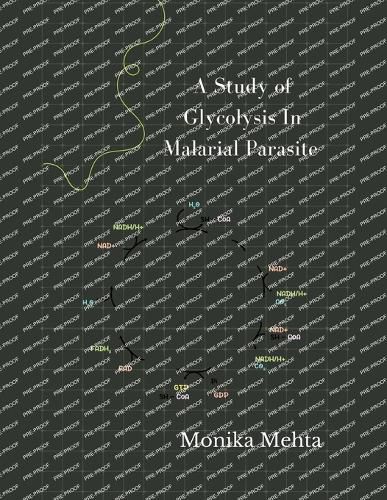A Study of Glycolysis in Malarial Parasite
Monika Mehta

A Study of Glycolysis in Malarial Parasite
Monika Mehta
This title is printed to order. This book may have been self-published. If so, we cannot guarantee the quality of the content. In the main most books will have gone through the editing process however some may not. We therefore suggest that you be aware of this before ordering this book. If in doubt check either the author or publisher’s details as we are unable to accept any returns unless they are faulty. Please contact us if you have any questions.
Malaria is by far the world's most important tropical parasitic disease.Caused by protozoan parasites of the genus Plasmodium, malaria disables and kills more people tham any other infectious disease.Every year it causes clinical illness often very severe in 300 to 500 million people, causing death amongst 1.5 to 2.7 million of whom succumb to the illness.At present, some 90 countries or territories are considered malarious, with almost half of them located in Africa.Of the four species of malarial parasite that can infect humans, P. falciparum, P. vivax, P. ovale, and P. malariae, only P. falciparum results in fatal infections. Consequently, it constitutes the focus of much of malaria research worldwide.Malaria is most serious in the poorest countries, among underprivileged populations living under the most difficult and impoverished conditions, thus contributing to the continued marginalization of people living in such areas.It undermines the health and welfare of families, endangers the survival and education of children, debilitates the active population, and strains the resources of both the countries and their inhabitants, limiting their ability to contribute to economic and social development. Human malaria has existed from antiquity till date. Enlarged spleens, presumably due to malaria, have been found in Egyptian mummies more than 3,000 years old, and the Ebers Papyrus (1570 B.C.)mentions the symptoms of malaria and a variety of remedies. Descriptions of malaria have been found in clay tablets (2000 B.C.), writings from the Vedic period (1500 to 800 B.C.), to those from Greek authors like Aristophanes, Aristotle, Plato and Sophocles, giving clear indication that by the fifth century B.C. Plasmodium malariae and P. vivax were present in Greece.In spite of such old accounts of this natural curse, the causative agents were not identified until fairly recently.The discovery of the three cycles of malaria took centuries and involved the contributions of hundreds of investigators.Importantly, Charles Louis Alphonse Laveran, in 1880, observed the parasite in the Plasmodium infected patient blood.Ronald Ross and Giovanni Grassi identified the vector of malaria transmission.
This item is not currently in-stock. It can be ordered online and is expected to ship in 7-14 days
Our stock data is updated periodically, and availability may change throughout the day for in-demand items. Please call the relevant shop for the most current stock information. Prices are subject to change without notice.
Sign in or become a Readings Member to add this title to a wishlist.


